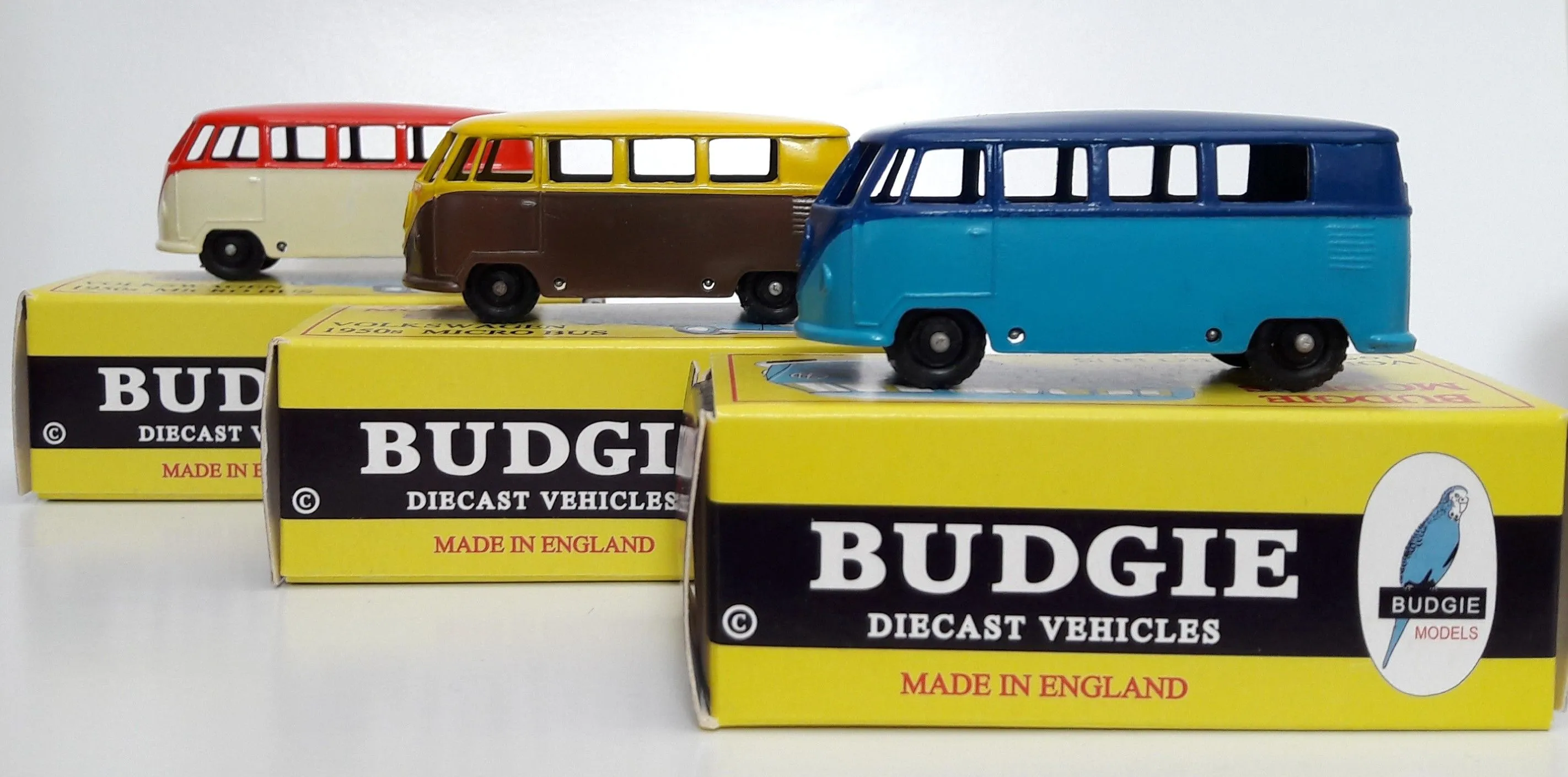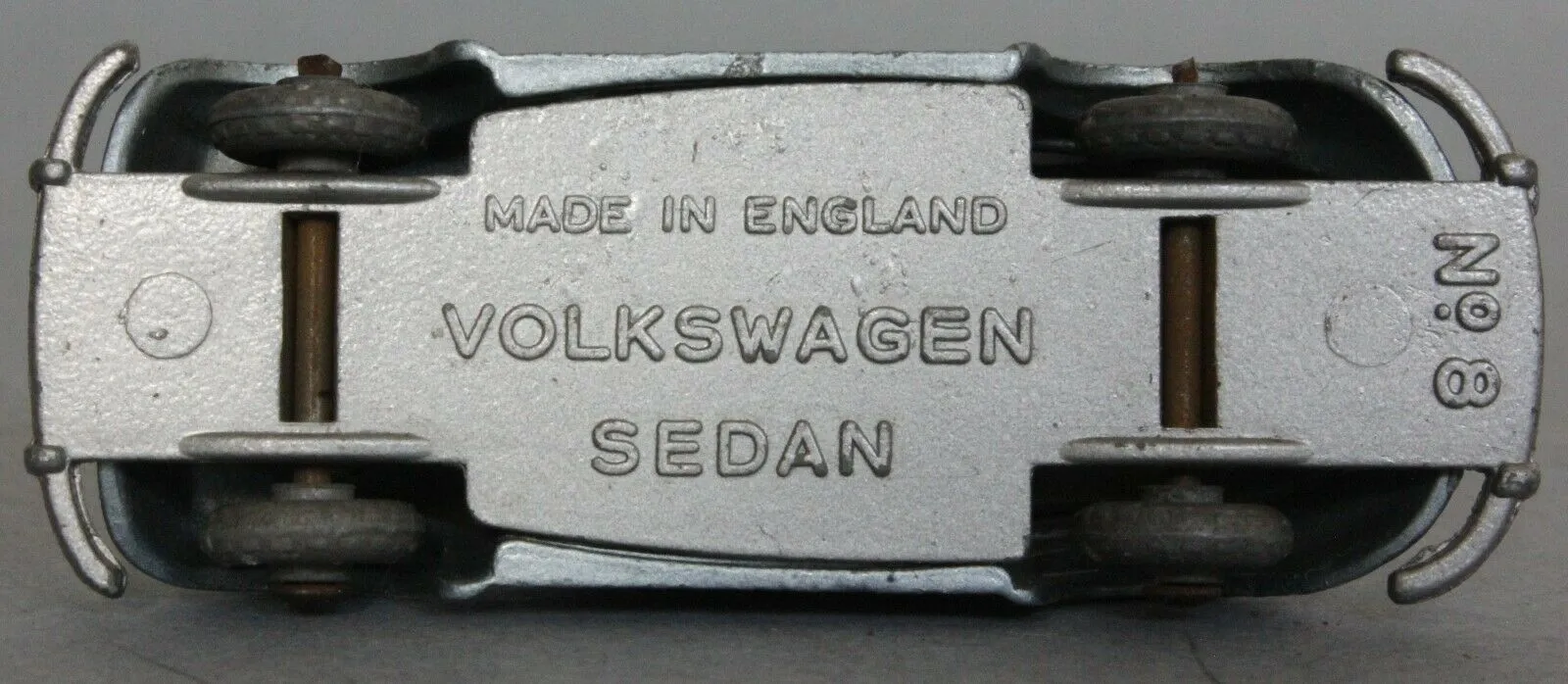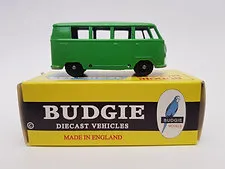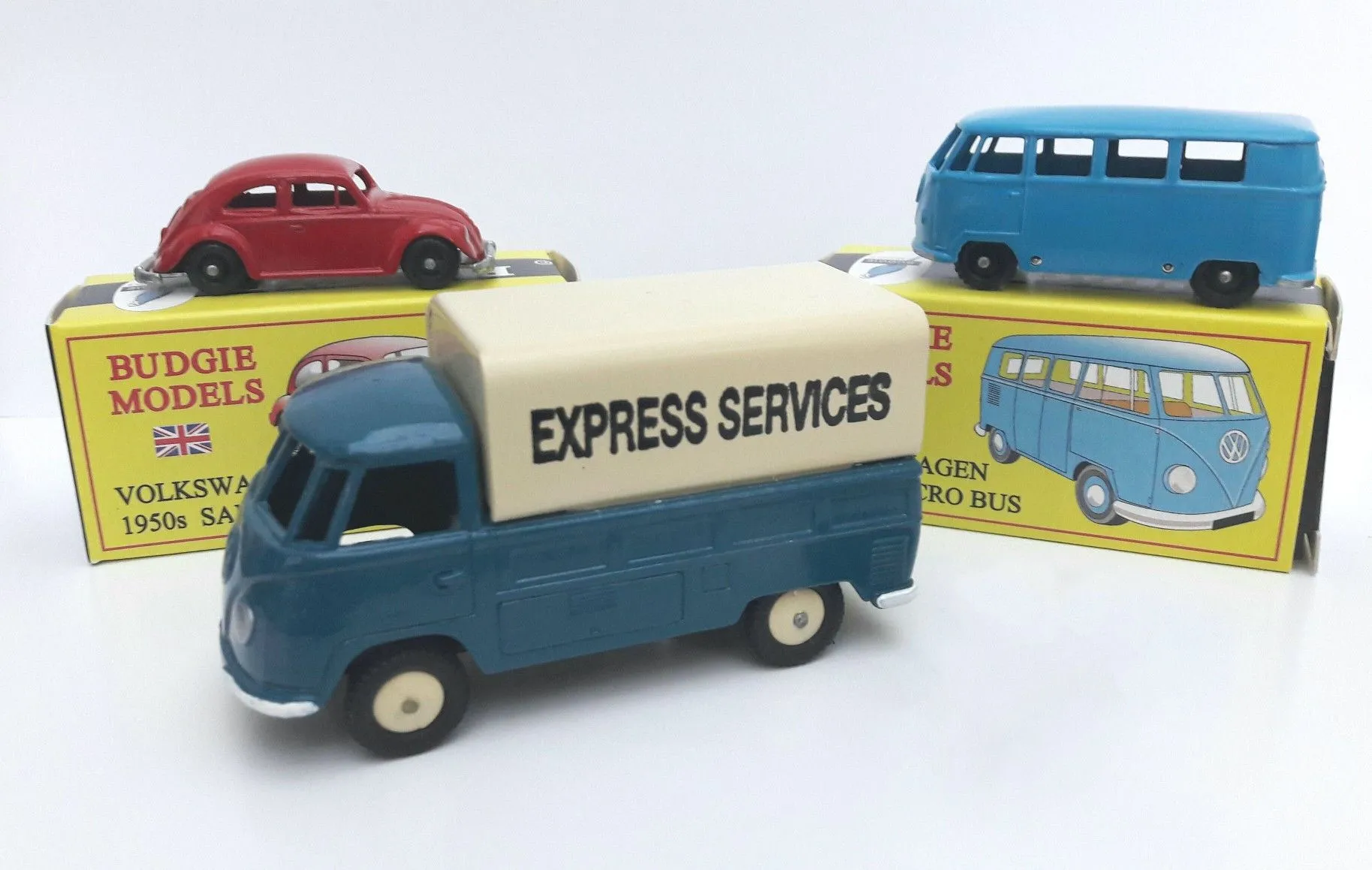What are Budgie Toys Diecast Models?
Budgie Toys diecast models represent a significant part of British toy history, captivating collectors and enthusiasts worldwide. These miniature vehicles, meticulously crafted from diecast metal, offer a glimpse into a bygone era of toy manufacturing and design. They are celebrated for their detail, durability, and the nostalgia they evoke. Understanding what constitutes a Budgie Toys diecast model is the first step in appreciating their appeal. These models are primarily known for their affordability and availability when compared to some of their competitors. They often capture the essence of real-life vehicles, from buses and trucks to cars and emergency vehicles, making them highly sought after by collectors. The history behind these models is as fascinating as the toys themselves, telling the story of a company that left an indelible mark on the world of toys.
The History of Budgie Toys (1938-1983)
The story of Budgie Toys spans from 1938 to 1983, a period that witnessed significant changes in toy manufacturing and design. Founded by D. Sebel & Co. in the UK, the company initially focused on producing wooden toys. However, the post-war era brought about a shift towards more durable and detailed toys, which led to the introduction of diecast models. This transition marked a turning point for Budgie Toys, allowing them to compete in a rapidly evolving market. The company’s commitment to quality and innovation established a legacy, with their diecast models becoming highly sought after by collectors. The evolution of Budgie Toys mirrored broader societal changes, including advancements in technology and shifts in consumer preferences. The impact on the toy industry is still felt today, making their history essential to understanding the toy’s appeal.
Early Days and Production

In the early days, Budgie Toys primarily manufactured wooden toys, a common practice before the dominance of diecast metal. The production methods were rudimentary compared to the sophisticated techniques of later years. Budgie Toys would slowly start introducing metal models after the Second World War. Production was simpler. The focus was on functionality and affordability. These early toys laid the foundation for the brand’s reputation for quality and value, which would later be applied to their diecast models. The company’s early days reflect the ethos of the time, emphasizing craftsmanship and a direct connection between the manufacturer and the consumer. These first toys, although quite different from their diecast successors, contributed to the brand’s identity and the expectations of its customers.
The Shift to Diecast
The introduction of diecast models marked a significant turning point for Budgie Toys. Diecast metal allowed for more intricate designs, greater durability, and enhanced realism. The shift towards diecast was driven by technological advances and a growing demand for more detailed toys. This transition was crucial in allowing Budgie Toys to compete in the growing toy market and to expand its product range. This shift also allowed the company to capture more of the market share. The company began releasing a wide range of vehicles, including cars, buses, trucks, and emergency vehicles. These detailed models quickly gained popularity, leading to the expansion of the company. This transition not only improved the quality and detail of their products but also helped to secure Budgie Toys’ place in toy history.
Top 7 Facts about Budgie Toys Diecast Models
Fact 1 The Scale of Budgie Toys

Budgie Toys models were typically produced in a variety of scales, with the most common being around 1:80 to 1:100 for vehicles. This scale allowed for detailed designs while maintaining a manageable size, making them appealing to children and collectors alike. This scale also ensured that the models were relatively affordable. The consistent use of specific scales allowed for a degree of realism and uniformity across their product line. The scale of the models plays a critical role in their appeal, making them ideal for display, play, and collecting. The scale of the models is an important characteristic that contributes to their collectibility and value within the world of diecast toys.
Fact 2 Popular Models
Some of the most popular Budgie Toys models include the Routemaster bus, various commercial vehicles, and classic cars. These models are highly sought after by collectors due to their historical significance and detailed design. These models are often associated with iconic British brands. The Routemaster bus, for example, is a particularly popular model, reflecting a specific period in London’s transport history. The popularity of certain models drives up their collectibility and value. Popular models capture the imagination of both children and adults, making them the cornerstone of many collections. The popularity of specific models underlines the cultural and historical relevance of Budgie Toys.
Fact 3 The Materials Used
Budgie Toys diecast models were primarily made from a zinc alloy, providing durability and the ability to capture fine details. This alloy was ideal for casting and allowed for a level of precision in the design of the vehicles. Other materials like plastic and rubber were used for tires, windows, and interior details. The combination of diecast metal and other materials provided a balance between realism and affordability. The careful selection of materials reflects the company’s dedication to quality and a balance between durability and visual appeal. The materials used in their construction directly contribute to the quality, durability, and overall appeal of the models.
Fact 4 Manufacturing Process

The manufacturing process of Budgie Toys involved die-casting, where molten metal was injected into molds to create the vehicle bodies. This process allowed for detailed designs and efficient production. The components were then assembled, painted, and decorated, with careful attention to detail throughout. This manufacturing process allowed for mass production while maintaining a degree of quality. The manufacturing process for Budgie Toys was a combination of precision engineering and skilled craftsmanship. Each stage of the manufacturing process reflects a balance between efficiency and attention to detail, ensuring that the final products met the standards expected by consumers and collectors.
Fact 5 Rarity and Collectibility
Rarity is a key factor in the collectibility of Budgie Toys diecast models. Limited edition releases, models with unique paint schemes, or those in pristine condition command the highest prices. The rarity of a model is often related to its production run, condition, and the demand from collectors. Models in excellent condition, with their original packaging, are particularly prized. Rarity, combined with historical significance and aesthetic appeal, makes these models valuable collector’s items. This aspect of rarity is essential for the collecting community, influencing the market value and the overall desire to own these models.
Fact 6 Identifying Marks
Identifying authentic Budgie Toys models involves looking for specific markings, such as the Budgie Toys logo and model numbers, often found on the base of the vehicle. The presence and clarity of these markings are crucial for verifying authenticity. Collectors should look for the original packaging, which can also confirm the model’s authenticity. Checking for specific details and comparing them with known specifications can also help in identification. Recognizing these marks is important for collectors. The correct identification of these marks is essential for establishing the model’s provenance and value. These details are critical for establishing authenticity and ensuring that a model is a genuine Budgie Toys product.
Fact 7 How to Value Your Models

The value of Budgie Toys diecast models depends on several factors, including the model’s rarity, condition, and the presence of original packaging. Models in mint condition with their original boxes are typically more valuable. Online marketplaces, toy auctions, and collector’s guides can provide insights into current market prices. Assessing the condition of the model is essential, considering any wear, paint loss, or damage. The value of a model can fluctuate based on collector demand and market trends. Understanding these factors will help you to make informed decisions when buying, selling, or valuing your Budgie Toys. The knowledge of these factors enables collectors to accurately assess the value of their collections.
Where to Find and Collect Budgie Toys
Online Marketplaces
Online marketplaces, such as eBay and specialized toy websites, are excellent resources for finding Budgie Toys diecast models. These platforms offer a wide variety of models. Online marketplaces allow collectors to browse and compare prices. Auction sites can provide the opportunity to acquire rare or sought-after models. Always check seller ratings and descriptions carefully before purchasing. Thorough research and careful evaluation of the seller are vital for a successful transaction. The online marketplaces have revolutionized collecting by providing unprecedented access to a global market. These sites offer an extensive range of options for collectors.
Toy Fairs and Auctions

Toy fairs and auctions offer opportunities to discover Budgie Toys models in person. These events allow collectors to inspect the models firsthand and to meet other enthusiasts. Auctions can provide chances to acquire rare or highly sought-after pieces. Local toy fairs and events can be a great way to expand your collection. Attending toy fairs and auctions is a great way to find hidden gems. They often feature a wide array of collectibles. These events provide a unique experience for collectors. These events are valuable for both buying and selling.
Tips for Collectors
For budding collectors, start by researching and understanding the different models and their values. Set a budget and stick to it, and always prioritize models in the best possible condition. Join collector communities and online forums to gain insights. Learn to identify authentic models. Research and patience are key. Collecting Budgie Toys requires a blend of passion, knowledge, and careful planning. Building a collection takes time. Build relationships with other collectors. These tips are essential for any collector. These tips will enhance your collecting journey.
Maintaining and Preserving Your Collection
Proper maintenance and preservation are essential for protecting the value of your Budgie Toys diecast models. Store your models in a cool, dry place, away from direct sunlight and extreme temperatures. Avoid handling your models excessively to prevent scratches and damage. Use soft cloths to clean the models gently. Investing in protective cases or display cabinets can also safeguard your collection. By following these tips, you can preserve your collection for years to come. Regular maintenance and careful handling are important to keep your models in good condition. Taking these measures will safeguard the value of your collection.
